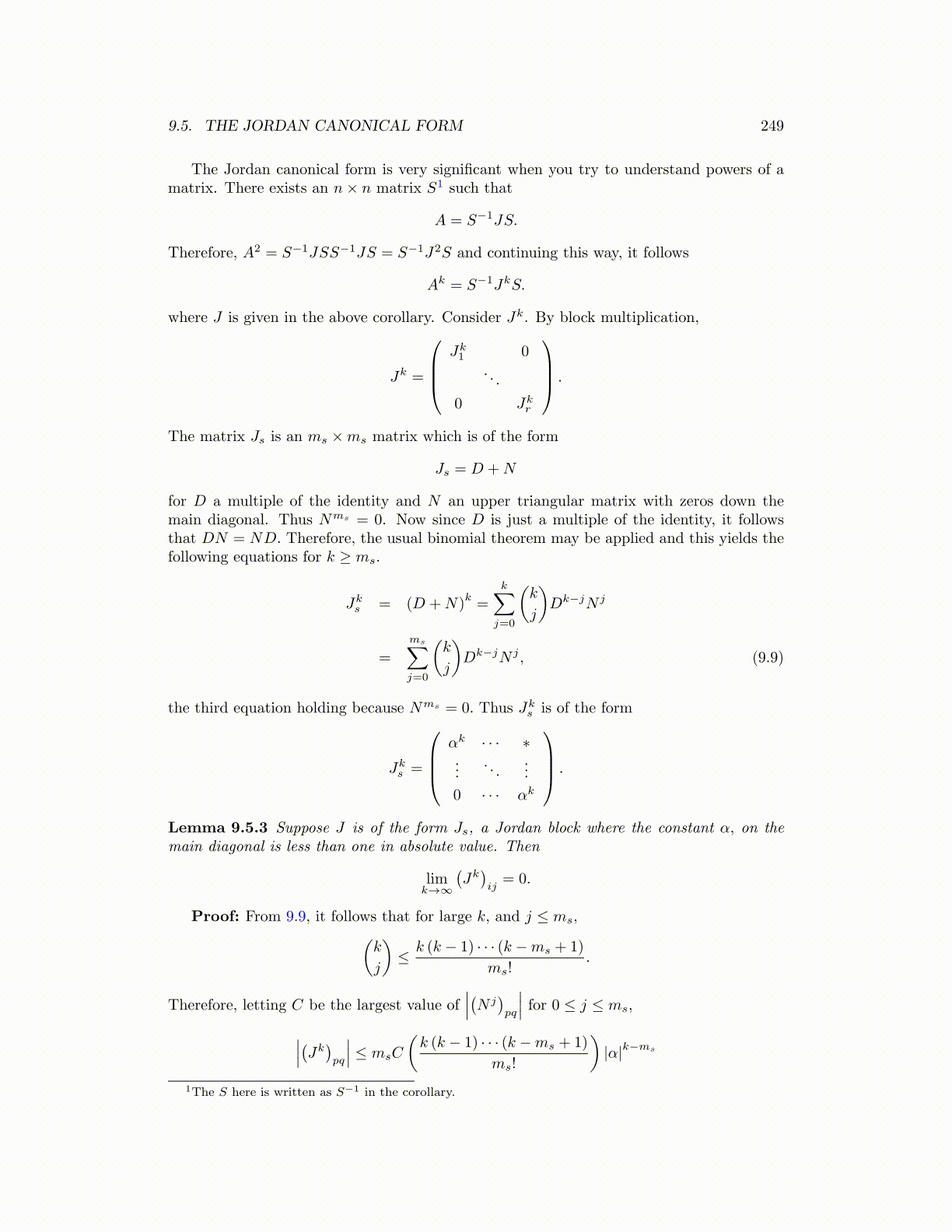
9.5. THE JORDAN CANONICAL FORM 249
The Jordan canonical form is very significant when you try to understand powers of amatrix. There exists an n× n matrix S1 such that
A = S−1JS.
Therefore, A2 = S−1JSS−1JS = S−1J2S and continuing this way, it follows
Ak = S−1JkS.
where J is given in the above corollary. Consider Jk. By block multiplication,
Jk =
Jk1 0
. . .
0 Jkr
.
The matrix Js is an ms ×ms matrix which is of the form
Js = D +N
for D a multiple of the identity and N an upper triangular matrix with zeros down themain diagonal. Thus Nms = 0. Now since D is just a multiple of the identity, it followsthat DN = ND. Therefore, the usual binomial theorem may be applied and this yields thefollowing equations for k ≥ ms.
Jks = (D +N)
k=
k∑j=0
(k
j
)Dk−jN j
=
ms∑j=0
(k
j
)Dk−jN j , (9.9)
the third equation holding because Nms = 0. Thus Jks is of the form
Jks =
αk · · · ∗...
. . ....
0 · · · αk
.
Lemma 9.5.3 Suppose J is of the form Js, a Jordan block where the constant α, on themain diagonal is less than one in absolute value. Then
limk→∞
(Jk)ij= 0.
Proof: From 9.9, it follows that for large k, and j ≤ ms,(k
j
)≤ k (k − 1) · · · (k −ms + 1)
ms!.
Therefore, letting C be the largest value of∣∣∣(N j
)pq
∣∣∣ for 0 ≤ j ≤ ms,∣∣∣(Jk)pq
∣∣∣ ≤ msC
(k (k − 1) · · · (k −ms + 1)
ms!
)|α|k−ms
1The S here is written as S−1 in the corollary.